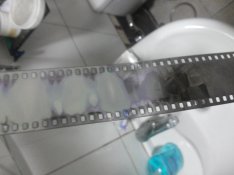Kugerfang
Member
Hi all, I'm a very new BW film user and I've just finished developing my third roll. However, there's a major problem: this happened to the third and second roll:

I assume this is a problem with the film loading onto the reel? These undeveloped parts happen after around 25 or 26th frame. I'm using a plastic tank and reel. I stand develop for an hour with one minute rotation at the first and 30 minute mark using 1+100 Parodinal since when I tried to use traditional developing, my negatives came out very thin. I use vinegar stop bath. The fixer, I forgot.

I assume this is a problem with the film loading onto the reel? These undeveloped parts happen after around 25 or 26th frame. I'm using a plastic tank and reel. I stand develop for an hour with one minute rotation at the first and 30 minute mark using 1+100 Parodinal since when I tried to use traditional developing, my negatives came out very thin. I use vinegar stop bath. The fixer, I forgot.











